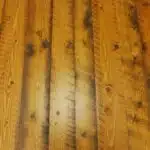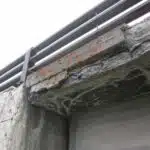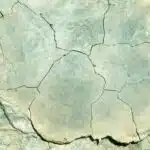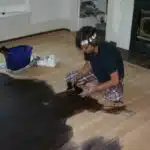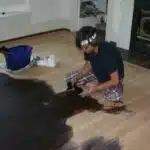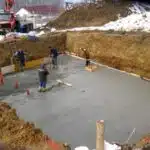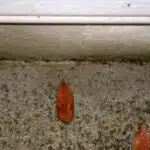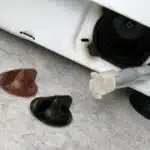Concrete floors are a popular flooring option for many commercial and residential properties due to their durability and low maintenance. However, over time, concrete floors can become dirty and stained from foot traffic, spills, and other environmental factors. Proper cleaning techniques are essential to maintain the appearance and longevity of concrete floors.
As a professional cleaning expert, it is important to understand the best practices for cleaning concrete floors. This article will provide a comprehensive guide on how to effectively clean various types of concrete floors using safe and efficient methods. Whether you are a business owner or homeowner looking to improve the cleanliness of your space, these tips will help you achieve a spotless and polished concrete floor that will impress every visitor.
Understanding The Types Of Concrete Floors
Concrete floors are a popular choice for many homeowners and businesses due to their durability, low maintenance, and cost-effectiveness. However, not all concrete finishes are created equal, and it’s essential to understand the types of concrete finishes available in order to determine the best cleaning method for your floors.
Some common types of concrete finishes include polished, stained, stamped, and sealed. Polished concrete is a high-gloss finish that is achieved by grinding down the surface with progressively finer diamond pads. Stained concrete involves applying a colorant to the surface of the floor and can create a variety of effects such as mottling or marbling. Stamped concrete is textured to resemble other materials such as brick or stone. Sealed concrete involves applying a protective coating to the surface of the floor.
Each type of finish has its own set of pros and cons. For example, polished concrete is highly durable and resistant to stains but can be slippery when wet. Stained concrete provides a unique look but may fade over time if not properly maintained. Stamped concrete can be prone to cracking if installed incorrectly but provides an affordable alternative to other flooring options.
Understanding the types of concrete finishes is crucial in determining the best cleaning method for your floors. By identifying the specific needs of your flooring material, you can effectively clean your surfaces without damaging them or compromising their integrity. In the next section, we will discuss how to identify these needs and select appropriate cleaning products and techniques accordingly.
Identifying The Cleaning Needs Of Your Concrete Floors
To properly clean concrete floors, it is important to first identify their cleaning needs. This involves assessing the durability of the concrete and choosing appropriate cleaning agents. Durability can be determined by examining the surface of the concrete for cracks, chips, or other damage. It is important to note that some cleaning methods may be too harsh for damaged concrete and could cause further harm.
Choosing the right cleaning agents is also crucial in maintaining the quality and longevity of your concrete floors. There are many different types of cleaners available, each with their own benefits and drawbacks. Some may be better suited for removing specific stains, while others may be more effective at tackling general dirt buildup. It is important to research and carefully choose a cleaner that will not damage your specific type of concrete flooring.
- A clean floor can promote a healthy living environment.
- Regular maintenance prolongs the life of your concrete floors.
- A well-maintained floor adds value to your property.
- Cleaning your floors regularly saves you money on costly repairs.
In summary, assessing durability and choosing appropriate cleaning agents are crucial steps in identifying the cleaning needs of your concrete floors. By taking these steps, you can ensure that your floors remain in top condition for years to come. In order to move forward with the cleaning process, gathering necessary supplies will be essential.
Gathering The Necessary Cleaning Supplies
After identifying the cleaning needs of your concrete floors, it is time to gather the necessary cleaning supplies. Before starting the cleaning process, you must choose appropriate cleaning agents that are suitable for the type of concrete floor you have. Different types of concrete floors require different cleaning agents, so it is important to know what type of concrete floor you have before choosing a cleaning agent.
It is essential to exercise safety precautions during the cleaning process. Wearing gloves and protective eyewear can prevent skin and eye irritation from contact with cleaning agents. Additionally, make sure that the area being cleaned is well-ventilated to avoid inhaling fumes that may cause respiratory problems.
To further visualize how to clean your concrete floor effectively, refer to this table below:
| Cleaning Agent | Type of Concrete Floor |
|---|---|
| Acidic cleaners | Stained or old concrete |
| Neutral cleaners | Polished or sealed concrete |
| Alkaline cleaners | Unsealed or rough-textured concrete |
Incorporating appropriate safety measures and selecting the right cleaning agent contribute greatly to a successful and safe cleaning process for your concrete floors. In preparing the area for cleaning, it is important to remove any furniture or objects on top of the floor and sweep away any loose debris. With these preparations in mind, you are now ready to start the actual cleaning process.
Preparing The Area For Cleaning
- Before beginning the cleaning process, it is necessary to remove any debris from the concrete floor.
- Pre-treating any visible stains on the concrete floor, with a suitable cleaning agent, can help to ensure the desired results are achieved.
- It is important to select the appropriate cleaning tools and supplies for the job – such as mops, buckets and cleaning agents – in order to ensure a successful clean.
- To properly prepare the area for cleaning, any loose dirt and debris must be swept and vacuumed prior to using any cleaning agents.
- It is recommended that pre-treatment of the stains is done before the area is mopped, to ensure that the stains are treated properly.
- Preparation of the tools and supplies required for cleaning is key to achieving the desired results.
Removing Debris
When it comes to cleaning concrete floors, preparing the area is crucial to ensure a successful and efficient cleaning process. The first step in preparing the area is removing debris, which can accumulate over time and make the cleaning process more difficult. As a professional cleaning expert, I recommend using pressure washers for large areas and sweeping techniques for smaller areas.
Using pressure washers is an effective way to remove debris from concrete floors. They use high-pressure water streams that can easily blast away dirt, dust, and other debris that have accumulated on the surface of the floor. When using pressure washers, it is important to keep in mind that they can be powerful tools and should be handled with care to avoid damaging the concrete surface.
Sweeping techniques are also an effective way of removing debris from concrete floors. This method involves using a broom or brush to sweep away loose dirt and dust from the surface of the floor. Sweeping should be done regularly to prevent buildup of debris on the floor. It is also important to use the right type of broom or brush depending on the type of concrete floor you are cleaning.
In conclusion, removing debris is an essential step when preparing a concrete floor for cleaning. Whether you choose to use pressure washers or sweeping techniques, it is important to take precautions and handle these tools with care to avoid damaging your concrete floors. By following these tips, you will be able to effectively remove debris from your concrete floors and prepare them for a thorough cleaning session.
Pre-Treating Stains
After removing debris from concrete floors, the next step in preparing the area for cleaning is pre-treating stains. Stains can be a common problem on concrete floors, and they can be caused by a variety of factors such as oil spills, food stains, or even rust. Pre-treating stains is important because it can help to ensure that the cleaning process is effective in removing all traces of dirt and grime from the surface.
Effective stain removal techniques include using special cleaners designed for concrete floors or creating a homemade solution using baking soda and water. For oil-based stains, an absorbent material like cat litter or sawdust can be used to soak up as much of the oil as possible before applying a cleaner. It’s important to let the pre-treatment solution sit on the stain for several minutes before scrubbing it away with a stiff-bristled brush.
It’s worth noting that some stains may not be completely removable, especially if they have been left untreated for an extended period of time. In such cases, it may be necessary to use specialized equipment or seek professional help to remove them. Nonetheless, pre-treating stains is still an essential step in preparing concrete floors for cleaning as it ensures that all visible dirt and grime are removed before starting with a thorough cleaning session.
Preparing Tools And Supplies
Now that we have discussed the importance of pre-treating stains, let’s move on to the next step in preparing the area for cleaning: choosing appropriate tools and supplies. Having the right equipment and materials can make a significant difference in how efficiently and effectively you clean concrete floors.
When preparing tools, it is essential to choose items that are specifically designed for cleaning concrete surfaces. For instance, using a regular mop or broom may not be effective in removing dirt and grime from porous concrete floors. Instead, it is recommended to use a stiff-bristled brush, a wet-dry vacuum, and a commercial-grade floor cleaner.
Moreover, safety precautions must be taken when cleaning concrete floors. The process involves handling chemicals and heavy equipment that could cause injuries if not used correctly. Therefore, before starting the cleaning process, ensure to wear personal protective equipment such as gloves and goggles. Additionally, read product labels carefully to understand their use and potential hazards.
In conclusion, preparing tools and supplies is an important step in ensuring that the cleaning process goes smoothly. Choosing appropriate tools can help you get better results while minimizing any risks involved in cleaning concrete floors. Remembering safety precautions should also be one’s top priority when undertaking this task.
Sweeping Or Vacuuming The Floor
To effectively clean concrete floors, it is important to start with sweeping or vacuuming the floor. This will remove any loose dirt, debris and dust that may have accumulated on the surface. It is recommended to use a broom or vacuum cleaner with a hard floor setting or attachment to ensure all dirt and debris are removed.
After sweeping or vacuuming, it is time to wet mop the floor. Using warm water and an appropriate cleaning solution, dampen the mop and start at one end of the room working towards the other end. Be sure to change out the water and cleaning solution as necessary during this process. Avoid using excessive water as this can damage the concrete surface.
When finished wet mopping, allow the floor to air dry completely before walking on it. A good practice is to use a fan or open windows to speed up drying time. Once dry, inspect for any missed spots or areas that may require additional attention such as stains or spills. In such cases, proceed to the next section where we discuss removing stains and spills from concrete floors in detail.
Removing Stains And Spills
Concrete floors are prone to staining due to their porous nature. If spills or stains are not immediately attended to, they can cause permanent damage to the concrete surface. To remove stains and spills from concrete floors, it is important to act quickly and use the right cleaning products.
Oil-based stains: To remove oil-based stains such as grease or motor oil, use a mixture of baking soda and water. Apply the paste to the stain and let it sit for several hours before scrubbing with a stiff brush. Rinse thoroughly with water.
Rust stains: Rust stains can be removed by using a mixture of lemon juice and salt. Apply the solution to the stain and let it sit for several hours before rinsing with water.
Ink stains: Ink stains can be removed by using rubbing alcohol or hydrogen peroxide. Apply a small amount of either substance directly on the stain, let it sit for several minutes, then blot away with a clean cloth.
Wine or coffee spills: For wine or coffee spills, use eco-friendly products such as vinegar or baking soda mixed with water. Apply the solution to the spill and let it sit for several minutes before scrubbing with a soft-bristled brush. Rinse thoroughly with water.
Preventing future stains is just as important as removing current ones. To prevent future staining, consider sealing your concrete floor every few years using an appropriate sealant product that will create an invisible barrier against moisture absorption and staining agents.
To ensure that your concrete floor remains in top condition, it is essential to apply a concrete cleaner solution regularly after removing any visible spills or stains. This will help maintain its original finish, prolong its life span, and keep your space looking clean and hygienic at all times.
Applying A Concrete Cleaner Solution
Did you know that concrete is one of the most widely used building materials in the world, with the global production of cement reaching 4.28 billion metric tons in 2019? Concrete floors are durable and long-lasting, making them a popular choice for industrial and commercial settings. However, over time, concrete floors can accumulate dirt, grime, and stains. To keep your concrete floors looking clean and polished, it’s important to use the right cleaner solution.
Choosing the right cleaner solution is crucial to effectively cleaning your concrete floors. There are various types of cleaners available on the market, including acid-based, alkaline-based, enzymatic, and more. It’s essential to read the label carefully before purchasing a cleaner to ensure that it’s suitable for your specific needs. For instance, if you’re dealing with tough stains like oil or grease, you may need an alkaline-based cleaner.
Once you’ve chosen the right cleaner solution for your concrete floor, it’s time to apply it evenly across the surface. Start by diluting the solution according to the manufacturer’s instructions. Then use a mop or a sprayer to apply it evenly onto the floor. Make sure you cover every inch of the surface area and let it sit for at least five minutes before scrubbing with a stiff-bristled brush or a floor machine scrubber. By following these steps diligently your concrete floors will be as good as new!
Transitioning into using a floor scrubber machine – Using a floor scrubber machine is an effective way to deep clean large areas of concrete flooring quickly and efficiently. In our next section, we’ll discuss how to operate a floor scrubber machine step-by-step for optimal results.
Using A Floor Scrubber Machine
When it comes to cleaning concrete floors, using a floor scrubber machine is an efficient and effective way to get the job done. Not only does it save time, but it also provides a thorough clean that manual methods may not achieve. However, before using a floor scrubber machine, it is important to ensure that the machine is well-maintained to prevent any malfunctions during the cleaning process.
Floor scrubber maintenance includes checking the water and detergent levels, inspecting the brushes or pads for wear and tear, and ensuring that all moving parts are functioning properly. It is also crucial to regularly clean the machine after each use to prevent any buildup of dirt or grime. By properly maintaining your floor scrubber machine, you can extend its lifespan and ensure that it performs at its best every time you use it.
The benefits of using a floor scrubber machine for cleaning concrete floors are numerous. Firstly, it saves time as compared to manual methods such as mopping or sweeping. This makes it an ideal choice for large commercial spaces such as warehouses or factories. Additionally, using a floor scrubber machine provides a more thorough clean than manual methods as it effectively removes stubborn stains and dirt particles from deep within the pores of the concrete surface.
Before rinsing the floor with water after using a floor scrubber machine, ensure that all areas have been thoroughly cleaned. The next section will focus on rinsing the floor with water to remove any remaining dirt or debris left behind after cleaning with a floor scrubber machine.
Rinsing The Floor With Water
After using a floor scrubber machine to clean your concrete floors, you may think that the job is done. However, there is still one crucial step left: rinsing the floor with water. This step ensures that any remaining dirt and cleaning solution are removed from the surface of the floor. By doing so, you can achieve a spotless and polished look for your concrete floors.
Benefits of rinsing the floor with water include:
- Removing any remaining dirt and cleaning solution
- Preventing residue buildup on the surface of the floor
- Ensuring that no slip hazards are present due to leftover soap or chemicals
Precautions for rinsing your concrete floors with water include:
- Using clean water to rinse instead of dirty or contaminated water
- Avoiding excess water on the surface of the floor, as this can lead to moisture damage
- Taking care not to oversaturate areas with high levels of grime or stains, as this may require additional cleaning
Once you have successfully rinsed your concrete floors with water, it is important to dry them completely. Moisture left behind can cause damage over time by weakening the surface and creating an environment for mildew growth. To avoid these issues, use a clean towel or mop to dry up any excess water on the surface of the floor.
Transition into next section: With these steps in mind, you can ensure that your concrete floors remain in top condition for years to come. The final step in this process is drying the floor completely, which we will discuss in detail in the next section.
Drying The Floor Completely
To ensure that your concrete floor is completely clean and free of moisture, it is important to allow it to air dry thoroughly. This step is crucial because any remaining moisture can lead to the growth of mold or mildew, which will require additional cleaning efforts. It is also important to avoid walking on the surface while it is still wet as this can cause slip and fall accidents.
Using a fan to assist with drying the floor is highly recommended as it will help increase airflow and reduce the drying time. Make sure to place the fan in a strategic location where it can circulate air throughout the entire area. This will help to prevent any pockets of dampness from forming, which could cause problems later on.
The importance of allowing your concrete floor to dry thoroughly cannot be overstated. Taking shortcuts at this stage can lead to long-term damage and costly repairs down the line. Once your floor has dried completely, you can move on to sealing it for added protection against stains, spills, and other forms of damage.
Sealing The Floor For Added Protection
Once you have thoroughly dried your concrete floor, the next step is to apply sealant for added protection. Applying sealant is an important step in maintaining the longevity of your concrete floor. It helps to prevent moisture, dirt, and stains from seeping into the pores of the concrete and causing damage.
When it comes to choosing sealant products, there are several options available. Some sealants are solvent-based, while others are water-based. Solvent-based sealants tend to be more durable but may emit harmful chemicals during application. Water-based sealants are eco-friendlier but may not last as long as solvent-based ones. Therefore, it’s essential to choose a sealant product that aligns with your priorities.
Here are some factors to consider when selecting a concrete floor sealant:
- Type of sealant: solvent or water-based
- Durability: how long will the product last?
- Application method: brush or roller
- Price: how much does it cost?
By taking these factors into account, you can select a suitable sealant product that meets your needs and budget. With proper application and maintenance, your sealed concrete floor can provide years of reliable service while retaining its original luster.
Maintaining The Cleanliness Of Your Concrete Floors
Maintaining the cleanliness of your concrete floors is essential for both aesthetic and hygienic reasons. To prevent damage to the surface, it’s important to regularly sweep and mop the floor with a non-abrasive cleaning solution. Choosing the right cleaning solution is crucial to avoid any chemical reactions that can cause discoloration or erosion of the concrete.
To maintain the cleanliness of your concrete floors, you should first remove any loose dirt or debris by sweeping or vacuuming. Once all visible debris has been removed, use a damp mop with a pH-neutral cleaner specifically designed for concrete surfaces. Avoid using harsh chemicals as they can damage the surface and make it more susceptible to stains and scratches.
Preventing damage and choosing the right cleaning solution are key factors in maintaining clean concrete floors. However, if you encounter any issues during the cleaning process, such as stubborn stains or discoloration, there are troubleshooting methods available. In the next section, we will explore some common issues that may arise when cleaning concrete floors and provide solutions to help you overcome them.
Troubleshooting Common Concrete Floor Cleaning Issues
Proper cleaning techniques are essential for maintaining the longevity and appearance of concrete floors. However, even with the best intentions, issues may arise during the cleaning process. It’s important to identify these common issues and take necessary measures to prevent them from occurring in the future.
One common problem is streaking or discoloration of the concrete surface after cleaning. This can be caused by using incorrect cleaning solutions or not rinsing thoroughly after cleaning. To avoid this issue, ensure that you are using an appropriate cleaner for your specific type of concrete and rinse thoroughly with clean water after applying any solution.
Another issue that may arise is efflorescence, which appears as a white powdery residue on the surface of the concrete. This occurs when moisture evaporates from within the concrete and brings salts to the surface. Effective solutions for removing efflorescence include using a mild acid solution or pressure washing with hot water. To prevent efflorescence from occurring in the future, ensure proper drainage and ventilation around your concrete surfaces.
Prevention measures should always be taken to avoid any further issues while cleaning your concrete floors. For example, it’s important to avoid using abrasive cleaners or tools that could damage the surface of your concrete floors. Additionally, regular sweeping and mopping can help prevent dirt and debris buildup that could cause scratches or stains on your floors.
If you’re struggling with any of these common issues or simply don’t have time to properly maintain your concrete floors, consider hiring professional concrete floor cleaning services. These experts have access to specialized equipment and products that can effectively clean and maintain your floors without causing any damage or streaking. With their expertise, you can rest assured that your floors will look their best for years to come.
Hiring Professional Concrete Floor Cleaning Services
If you have tried cleaning your concrete floors on your own, and it hasn’t been successful, you may want to consider hiring professional concrete floor cleaning services. These professionals have the expertise and equipment necessary to handle even the toughest of stains and dirt buildup. Not only will they save you time and effort, but they can also provide a deeper clean that will leave your floors looking brand new.
One of the main benefits of hiring professional concrete floor cleaning services is their cost-effectiveness. While it may seem like an added expense at first, these services can actually save you money in the long run. Professional cleaners have access to specialized equipment and cleaning solutions that are not typically available to the average homeowner. This means that they can get the job done faster and more efficiently than if you were to try to do it yourself.
Overall, hiring professional concrete floor cleaning services offers many benefits for homeowners who want to keep their floors looking their best. From cost-effectiveness to a deeper clean, these services are well worth considering if you are struggling with tough stains or dirt buildup on your floors.
| Cleaning Method | Pros | Cons |
|---|---|---|
| Pressure Washing | -Effective for large areas -Removes deep stains -Eco-friendly | -Can damage surfaces -May require multiple treatments -Not suitable for all surfaces |
| Acid Etching | -Effective for removing stubborn stains -Prepares surface for coatings or sealers -Affordable | -Requires safety precautions -Not recommended for DIY use -Can cause damage if not done correctly |
| Diamond Grinding | -Leaves smooth finish -Removes paint and coatings easily -Versatile for different surfaces | -Expensive upfront cost -Can be loud and dusty -May require professional assistance |
Next up, we’ll address some frequently asked questions about cleaning concrete floors.
Frequently Asked Questions About Cleaning Concrete Floors
Cleaning concrete floors can be a daunting task, but with the right techniques and best cleaners, it can be done effectively. Just like a chef needs the right ingredients to make a delicious meal, cleaning experts need the right tools to get rid of tough stains on concrete floors. The first step in cleaning concrete floors is to remove any loose dirt or debris by sweeping or vacuuming.
Once the floor is free of any loose debris, it’s time to start deep cleaning. One effective technique for cleaning concrete floors is using a combination of water and vinegar. Mix equal parts of water and vinegar in a bucket, dampen a mop with the solution, and then mop the entire floor. For tougher stains or grease spots, sprinkle baking soda on the affected areas before mopping with vinegar solution.
Another effective technique for cleaning concrete floors is using a pressure washer. This method works best for outdoor concrete surfaces such as driveways or patios. A pressure washer uses high-pressure water to blast away dirt and grime from concrete surfaces. However, it’s important to use caution when using this method as too much pressure can damage your concrete surface.
Cleaning concrete floors requires patience and attention to detail. By following these techniques and using the best cleaners available, you can restore your concrete floor’s shine and keep it looking new for years to come. Remember that prevention is key in keeping your floor clean – place mats at entryways to prevent dirt from being tracked in, and clean up spills immediately before they soak into the porous surface of your concrete floor.
Conclusion
In conclusion, cleaning concrete floors is a task that requires adequate preparation, the right tools, and a keen eye for detail. As a professional cleaning expert, it is important to understand the different types of concrete floors and their unique cleaning needs. By identifying these needs and following the proper cleaning procedures, you can maintain the cleanliness and durability of your concrete floors.
Concrete floors are like blank canvases waiting for an artist’s touch. Just as an artist carefully selects their paintbrushes and colors to create a masterpiece, you must carefully select your cleaning supplies to create a clean and polished surface. With the right tools in hand, sweeping away dirt and grime becomes effortless. Remember that maintaining the cleanliness of your concrete floors also involves regular maintenance checks to identify potential issues before they escalate into bigger problems.
Overall, cleaning concrete floors is not only about creating a visually appealing space but also about ensuring that the surface remains durable over time. By following these steps and troubleshooting common issues that may arise during the process, you can achieve a spotless finish that will leave your guests in awe. So go ahead and put on your cleaning hat – with these tips at your disposal, you are well on your way to becoming a master in the art of concrete floor cleaning!
Image Credits
- “Sealed Concrete Floor – Strawbale House Build in Redmond Western Australia” by Red Moon Sanctuary (featured)



